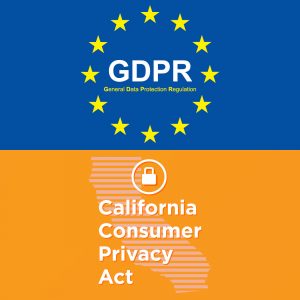Be you a founder, would-be investor or acquirer, correctly valuing the intellectual property of a company is rarely a simple task, but it can be even more challenging when that IP involves artificial intelligence or machine learning. See what our colleague Josh Tucker has to say about the challenges and importance of protecting underlying IP on 7 Mile Advisors’ Deal Talk podcast, “How Patents, AI and Machine Learning Affect Value.”
Trolls and Consequences: A Racially Motivated Doxing and Social Media Assault Is Ruled a Compensable Offense
 We’ve previously written about doxing and how it can be used by both vigilante social activists and malicious cyber bullies. Recently, in a first-of-its-kind ruling, the U.S. District Court for the District of Columbia concluded that white supremacists using social media to target and harass American University’s first female African-American student body president were liable to her for over $725,000 in damages.
We’ve previously written about doxing and how it can be used by both vigilante social activists and malicious cyber bullies. Recently, in a first-of-its-kind ruling, the U.S. District Court for the District of Columbia concluded that white supremacists using social media to target and harass American University’s first female African-American student body president were liable to her for over $725,000 in damages.
A Pocketful of Quarters: Agencies and Lawmakers Grapple with Digital Asset Regulations
Pretty much from the introduction of Satoshi’s cleverly constructed currency, industry players and observers alike have waited to see how exactly the increasing population of digital assets would be categorized and regulated. Slotting “disruptive” technologies into existing regulatory regimes is hardly a swift process, but there has been some recent movement on behalf of U.S. regulators and Congress. In “All Eyes Are on Regulation of Digital Assets as Federal Agencies and Lawmakers Seek to Bring Clarity,” colleagues Daniel N. Budofsky and Aaron R. Hutman break down some of that activity. In the first of three alerts on the matter, they look in particular at the SEC’s recent no-action letter involving tokens released by the gaming company, A Pocketful of Quarters.
Lawmakers (and Artists) Fight Those Facial Recognition Frown Lines
A sponsored post popped up on my Instagram last week that captured my obsession with statement jewelry and my periodic check on developments in facial recognition technology: “Artist Designs Metal Jewelry to Block Facial Recognition Software from Tracking You”. Statement jewelry? Check. An indication of how stressed out people are by facial recognition technology? I think so. While an experimental project, it’s not a far stretch to imagine the design actually being sold and purchased.
News of Note for the Internet-Minded (8/30/19) – Minecraft AI, GPS Tracking Transparency and Sweat Checks
What becomes of old (popular) Twitch channels, is Walmart getting into the virtual currency game, could 5G mean safer self-driving vehicles, and more …
The 5G-Enhanced Potential of Augmented Reality Comes with Interesting Legal Issues
In case you don’t know, William Gibson is the prescient science fiction author who effectively coined the terms “the matrix” and “cyberspace” as we currently use them, way back in the early 1980s. He also predicted augmented reality applications. In his 2007 novel, Spook Country, a character has taken to creating “locative art” installations in the real world that can be viewed only through mobile devices that use the GPS grid to create a virtual overlay on top of the real world as recorded through the device. For example, the artist recreates the scene of River Phoenix’s death, complete with annotations, that can be seen when the viewing device is brought to the real-world location where Phoenix died and aimed at the spot where his body was found. A character in the book describes such locative art this way: “Spatially tagged hypermedia. The artist annotating every centimeter of a place, of every physical thing. Visible to all, on devices such as these.” Today, we simply call that “augmented reality”—or AR for short.
Rulemaking Effort Looks at “Emerging” and “Foundational” Technologies
Since January, Bureau of Industry (BIS) officials have been formulating an analytical framework for establishing controls on emerging technologies (which include biotechnology, artificial intelligence and machine learning technology, quantum information and sensing technology, additive manufacturing, and robotics). Recently on the Global Trade & Sanctions Law blog, colleagues Nancy A. Fischer, Stephan E. Becker, Matthew R. Rabinowitz and Sahar J. Hafeez provided an update on the process, while explaining why the timing of the rule will matter for companies for which export controls (and CFIUS) are a concern.
CCPA, GDPR and the Future of Cross-Device Tracking
 Efforts to regulate cross-device tracking have increased since we last addressed the topic in 2017, following the release of the FTC’s Staff Report. Significant developments include the implementation and enforcement of the EU’s General Data Protection Regulations (GDPR), and the fast-approaching implementation deadline for the California Consumer Privacy Act (CCPA). These regulations, while not targeting cross-device tracking specifically, seek to limit the way in which consumer data is tracked and sold.
Efforts to regulate cross-device tracking have increased since we last addressed the topic in 2017, following the release of the FTC’s Staff Report. Significant developments include the implementation and enforcement of the EU’s General Data Protection Regulations (GDPR), and the fast-approaching implementation deadline for the California Consumer Privacy Act (CCPA). These regulations, while not targeting cross-device tracking specifically, seek to limit the way in which consumer data is tracked and sold.
The “Commander-in-Tweet” Returns: When a Social Media Account Creates a Public Forum, Critics Get to Stay
 Two years ago, we wrote about a possible First Amendment challenge involving Donald Trump’s practice of blocking certain Twitter users from his @realDonaldTrump account. While it was unclear at the time of our post whether the Knight First Amendment Institute at Columbia University—an organization that uses strategic litigation to preserve the freedoms of speech and the press—would pursue further action, the Knight Institute filed a complaint a few days later in the U.S. District Court for the Southern District of New York against Trump, then-White House Press Secretary Sean Spicer and Daniel Scavino, the White House Director of Social Media and Assistant to the President. On July 9, 2019, the U.S. Court of Appeals for the Second Circuit issued a decision regarding this First Amendment issue.
Two years ago, we wrote about a possible First Amendment challenge involving Donald Trump’s practice of blocking certain Twitter users from his @realDonaldTrump account. While it was unclear at the time of our post whether the Knight First Amendment Institute at Columbia University—an organization that uses strategic litigation to preserve the freedoms of speech and the press—would pursue further action, the Knight Institute filed a complaint a few days later in the U.S. District Court for the Southern District of New York against Trump, then-White House Press Secretary Sean Spicer and Daniel Scavino, the White House Director of Social Media and Assistant to the President. On July 9, 2019, the U.S. Court of Appeals for the Second Circuit issued a decision regarding this First Amendment issue.
News of Note for the Internet-Minded (7/12/19) – Non-Fungible Tokens, VR Aptitude Tests and Alexa Hears You!
Prime phishing day is upon us; Google hangs on to social media aspirations by a Shoelace; the prospects of Apple’s AR glasses get cloudy; and more …







